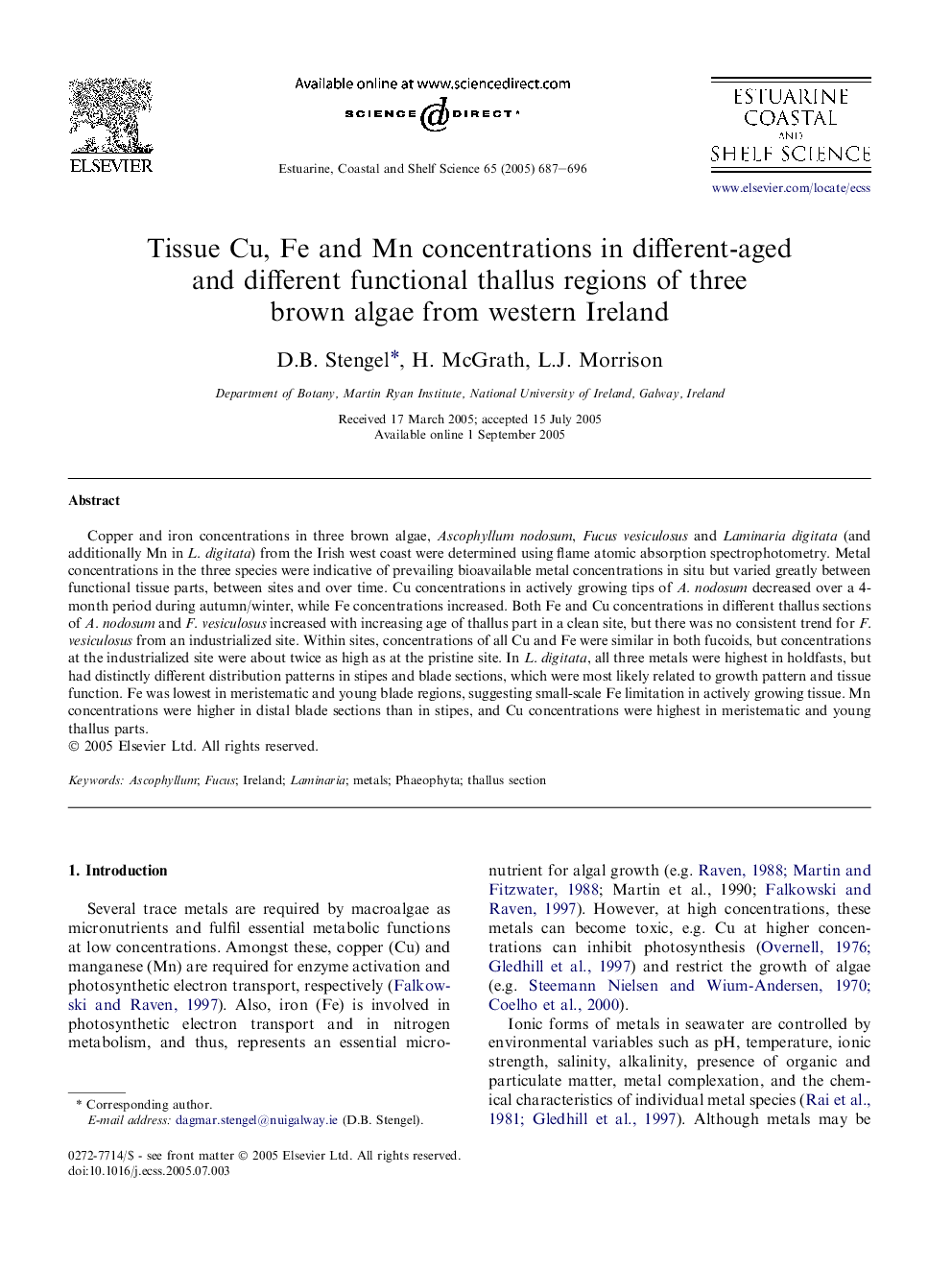| Article ID | Journal | Published Year | Pages | File Type |
|---|---|---|---|---|
| 9480638 | Estuarine, Coastal and Shelf Science | 2005 | 10 Pages |
Abstract
Copper and iron concentrations in three brown algae, Ascophyllum nodosum, Fucus vesiculosus and Laminaria digitata (and additionally Mn in L. digitata) from the Irish west coast were determined using flame atomic absorption spectrophotometry. Metal concentrations in the three species were indicative of prevailing bioavailable metal concentrations in situ but varied greatly between functional tissue parts, between sites and over time. Cu concentrations in actively growing tips of A. nodosum decreased over a 4-month period during autumn/winter, while Fe concentrations increased. Both Fe and Cu concentrations in different thallus sections of A. nodosum and F. vesiculosus increased with increasing age of thallus part in a clean site, but there was no consistent trend for F. vesiculosus from an industrialized site. Within sites, concentrations of all Cu and Fe were similar in both fucoids, but concentrations at the industrialized site were about twice as high as at the pristine site. In L. digitata, all three metals were highest in holdfasts, but had distinctly different distribution patterns in stipes and blade sections, which were most likely related to growth pattern and tissue function. Fe was lowest in meristematic and young blade regions, suggesting small-scale Fe limitation in actively growing tissue. Mn concentrations were higher in distal blade sections than in stipes, and Cu concentrations were highest in meristematic and young thallus parts.
Related Topics
Physical Sciences and Engineering
Earth and Planetary Sciences
Geology
Authors
D.B. Stengel, H. McGrath, L.J. Morrison,
